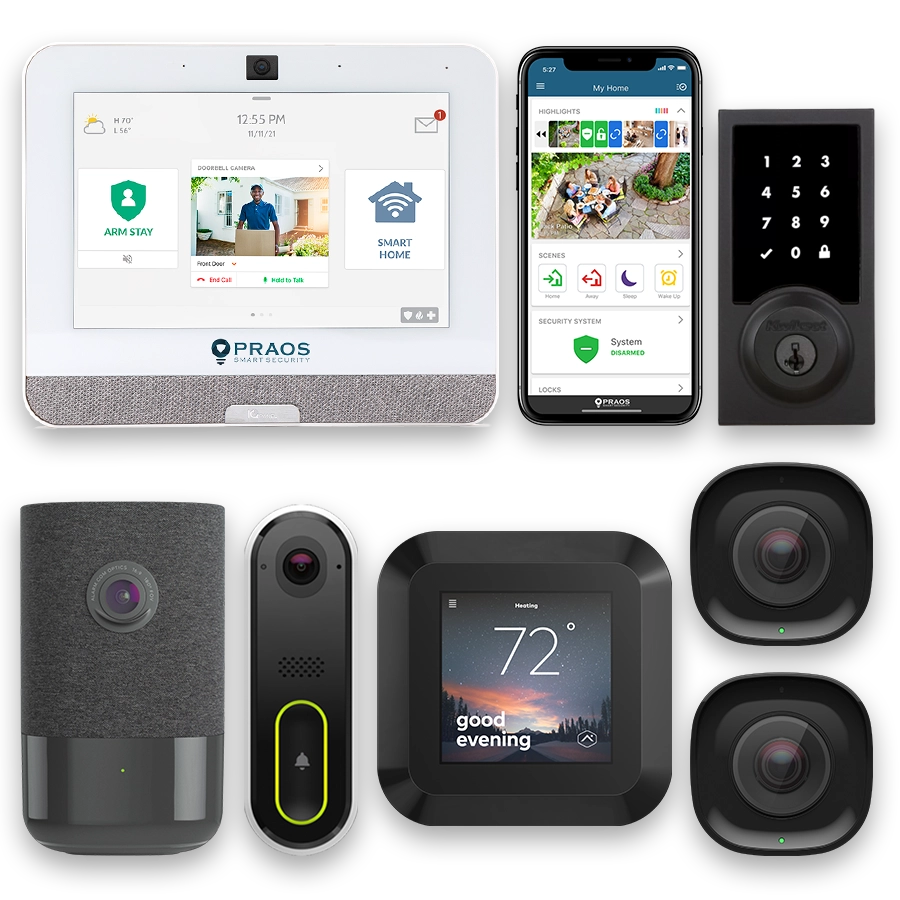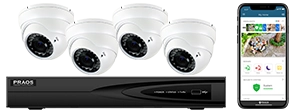- Introduction to the Evolution of Home Security in Richmond
- Traditional Home Security Systems: A Historical Perspective
- The Advent of Smart Locks: Technology and Adoption in Richmond
- Motion Sensors: Enhancing Real-Time Residential Safety
- Integration and Interconnectivity: Building a Smarter Home Security Network
- Community Impact: How Smart Technology is Shaping Neighborhood Safety
- Future Trends in Home Security: Innovations on the Horizon
Introduction to the Evolution of Home Security in Richmond
Residential security has evolved dramatically over the past few decades, reflecting technological advancements and societal changes. Richmond, like many other cities, has experienced a significant transformation in how residents protect their homes. The traditional methods of fortifying homes with basic locks and alarm systems have gradually given way to more sophisticated and interconnected solutions. This chapter aims to shed light on the journey of home security in Richmond, tracing its progression from conventional systems to the adoption of modern smart technologies.
In the early stages, home security in Richmond primarily relied on physical deterrents such as strong locks, window bars, and manual surveillance. While these measures provided a basic level of protection, they were often reactive rather than proactive. The introduction of electronic alarm systems in the mid-20th century marked the first significant shift towards more advanced security methods. These systems used sensors and alarms to detect unauthorized entries, alerting homeowners and authorities to potential threats.
According to data gathered by the Richmond Police Department, the adoption of electronic alarm systems coincided with a reduction in residential burglary rates. The table below illustrates a comparison of burglary incidents before and after the widespread use of these systems:
| Time Period | Number of Burglary Incidents |
|---|---|
| 1960-1970 | 3,200 |
| 1970-1980 | 2,500 |
While electronic alarm systems represented a leap forward, they were not without limitations. False alarms were a common issue, often caused by system malfunctions or user error. Additionally, these systems mostly operated as standalone units, lacking the interconnectivity that modern smart devices offer.
The advent of the internet and advancements in wireless technology paved the way for a new generation of home security solutions. Smart locks and motion sensors, integrated into comprehensive security networks, have become increasingly popular among Richmond’s residents. These devices not only enhance security but also offer convenience and ease of use, leveraging real-time data and remote access capabilities.
As we delve deeper into the specifics of smart locks and motion sensors in the following chapters, it is important to understand their role within the broader evolution of home security. Richmond’s journey from mechanical locks to intelligent security systems underscores the city’s commitment to embracing technology for safer living environments. This ongoing evolution continues to shape how residents safeguard their homes and families, making Richmond a reflective microcosm of broader trends in home security.
Traditional Home Security Systems: A Historical Perspective
Traditional home security systems have played a pivotal role in protecting residences across Richmond for decades. These systems typically involve a combination of physical measures, mechanical locks, and electronic alarms designed to deter and detect unauthorized entry.
One of the oldest forms of home security is the use of mechanical locks. These locks have evolved from basic wooden locks in ancient times to more sophisticated metal locks with complex key mechanisms. In Richmond, many historical homes still feature these traditional locking mechanisms, which provide a fundamental layer of security.
In the mid-20th century, electronic alarm systems began to emerge as a significant advancement in home security. These systems often included a control panel, door and window sensors, and audible alarms. When a door or window was opened without authorization, the alarm would be triggered, alerting homeowners and potentially scaring off intruders.
Additionally, monitoring services became an integral part of traditional security systems. Companies like ADT and Brinks provided 24/7 monitoring, alerting authorities in the case of a security breach. This added a layer of professional oversight that bolstered residential safety.
Another important component was motion detectors, which were initially based on passive infrared technology. These devices detected changes in heat signatures within a specified area, and any movement could trigger an alarm. Over the years, technological improvements enhanced the sensitivity and accuracy of these detectors, reducing false alarms and increasing reliability.
For many Richmond homeowners, signage from security companies also served as a deterrent, signaling to potential intruders that the property was protected by a professional alarm system.
Despite these advancements, traditional home security systems have their limitations. Mechanical locks can be picked, and electronic systems can be bypassed by experienced intruders. Furthermore, false alarms due to malfunctions or user error were a common issue, often leading to fines or desensitization to alarms.
As the foundation of residential safety in Richmond, traditional home security systems set the stage for the technological innovations that followed. These systems laid the groundwork for the modern smart security solutions that are transforming home protection today.
The Advent of Smart Locks: Technology and Adoption in Richmond
The advent of smart locks has marked a significant technological shift in residential security in Richmond. These advanced locking systems offer features such as remote access, real-time alerts, and integration with other smart home devices, providing homeowners with enhanced control over their home security.
Smart locks operate using various technologies, including Bluetooth, Wi-Fi, and Z-Wave. Bluetooth-enabled smart locks allow users to unlock their doors using their smartphones when within range, while Wi-Fi enabled locks provide remote access from anywhere with an internet connection. Z-Wave smart locks can communicate with other smart devices as part of a broader home automation system.
According to a survey conducted by the U.S. Department of Housing and Urban Development in 2022, approximately 14% of homes in Richmond have adopted smart locks. This trend is reflective of a broader national uptick in the adoption of smart home technology. Increased awareness of home security, ease of use, and the growing availability of affordable smart lock options contribute to this rise.
| Year | Percentage of Homes with Smart Locks in Richmond |
|---|---|
| 2018 | 5% |
| 2020 | 9% |
| 2022 | 14% |
Several benefits are associated with the use of smart locks. These include enhanced security features such as tamper alerts and integration with surveillance systems. For instance, when a smart lock is tampered with, it can immediately notify the homeowner and begin recording via connected security cameras. The convenience of keyless entry also means that homeowners no longer need to worry about losing keys or unauthorized duplicates being made.
Despite numerous advantages, smart locks are not without their challenges. Cybersecurity is a major concern, as smart locks can be vulnerable to hacking. To mitigate this risk, manufacturers regularly update firmware and encourage users to use strong, unique passwords. Additionally, the reliance on batteries means that homeowners need to ensure their smart locks are kept charged to avoid getting locked out.
Overall, the adoption of smart locks in Richmond represents a growing trend toward technological integration in home security. The continuous improvement in smart lock technology is likely to drive further adoption, enhancing residential safety and providing peace of mind to homeowners.
Motion Sensors: Enhancing Real-Time Residential Safety
Motion sensors have become a cornerstone of modern home security systems, offering real-time protection and surveillance capabilities that are transforming how residents in Richmond secure their homes. Initially employed predominantly in commercial settings, motion sensors have now become widely accessible to homeowners, thanks to advancements in technology and reductions in cost.
Modern motion sensors employ a variety of detection methods, including passive infrared (PIR), microwave, and ultrasonic sensors. Passive infrared sensors are the most commonly used in residential settings; they detect the heat emitted by living beings. When a significant change in infrared radiation is detected within their field of view, they trigger an alarm. These sensors are highly sensitive and can detect movements even in low-light conditions, adding a crucial layer of security during night hours.
Microwave sensors, while less common in home applications, use microwave pulses to detect movement. They can penetrate walls and other objects, making them effective in environments where the PIR sensors may not perform optimally. Ultrasonic sensors, which use sound waves to detect movement, are another alternative, though their sensitivity and potential for interference make them less suitable for residential use.
In Richmond, the adoption rates of motion sensors have surged, partly due to the increasing availability of DIY security systems and professional installation services. Companies like SimpliSafe, Ring, and ADT offer sophisticated motion sensor systems that can be easily integrated into existing home security setups. According to a 2022 survey by Statista, nearly 35% of households in Richmond now utilize some form of motion-sensing technology as part of their home security solutions.
The benefits of motion sensors extend beyond simple intrusion detection. Many systems can be configured to notify homeowners via smartphone alerts, enabling immediate action if an alarm is triggered. Additionally, advanced AI and machine learning algorithms are being integrated to distinguish between humans, pets, and other objects, reducing the incidence of false alarms.
The Richmond Police Department has also highlighted the importance of motion sensors in enhancing residential safety. By deterring potential intruders and providing real-time alerts, these devices not only protect individual homes but also contribute to broader neighborhood safety. Residents are encouraged to strategically place motion sensors covering entry points such as doors and windows, as well as common pathways in and around the property.
Despite their advantages, motion sensors do have limitations. Factors such as battery life, sensor range, and environmental conditions can affect their performance. Hence, regular maintenance and periodic testing are essential to ensure their optimal functioning. Additionally, privacy concerns have been raised regarding the data collected by these devices, underscoring the need for robust data protection measures and adherence to regulatory standards.
In summary, motion sensors are a critical component of contemporary home security systems in Richmond, leveraging cutting-edge technology to offer enhanced protection and peace of mind to residents. As these technologies continue to evolve, their role in fostering a safer residential environment is expected to expand even further.
Integration and Interconnectivity: Building a Smarter Home Security Network
In the modern landscape of home security, integration and interconnectivity have emerged as critical components. Homeowners in Richmond now seek systems that not only provide robust security but also deliver seamless, interconnected experiences. At the forefront of this movement is Praos, a leading local home security company, known for its commitment to ensuring the safety of families and homes.
What sets Praos apart is its dedication to creating a truly connected home environment. With a centralized app, Praos offers a unified solution for security, automation, and surveillance. This allows homeowners to manage various aspects of their home’s security from a single platform, enhancing both usability and peace of mind.
The integration offered by Praos encompasses an extensive range of smart devices. By utilizing a monitored new system plan, customers can benefit from FREE Equipment and Free Installation, making advanced security solutions more accessible. Rates start at just $19.95 per month, making it a viable option for many households.
Praos’s systems are customized based on individual needs and budgets, ensuring that each setup is tailored to provide optimal protection. This customization is achieved through close collaboration between Praos’s expert team and the customer, ensuring that every aspect of the home security network is thoughtfully designed and implemented.
Another significant benefit of Praos’s integrated systems is the ability to have constant monitoring, regardless of the homeowner’s location. Whether at work or on vacation, clients can rest assured that their home is being monitored and that any unusual activity will be promptly addressed.
By building a smarter home security network, Praos enhances the overall safety and convenience for Richmond’s residents. This interconnected approach not only deters potential intruders but also simplifies daily security management, ensuring that homeowners can focus on what truly matters—living their lives with peace of mind.
Through cutting-edge technology and a relentless commitment to excellence, Praos exemplifies how the integration and interconnectivity of modern security systems are transforming residential safety in Richmond.
Community Impact: How Smart Technology is Shaping Neighborhood Safety
The integration of smart technology, including smart locks and motion sensors, has had a significant impact on neighborhood safety within the Richmond community. These advancements have not only enhanced individual household security but have also contributed to greater communal safety.
One notable impact is the increase in crime deterrence. According to a study by the National Institute of Justice, the presence of visible security measures such as smart locks and motion sensors can significantly reduce the likelihood of a home being targeted by burglars. This is because these technologies present a higher risk to would-be intruders of being caught in the act.
Moreover, smart home security systems are often interconnected across neighborhoods through apps and local networks. This interconnectivity allows residents to share security alerts and real-time footage with their neighbors, creating a more vigilant and informed community. The Richmond Police Department has also noted a rise in community-led security initiatives facilitated by this technology, leading to quicker response times and increased reporting of suspicious activities.
Another community benefit is the enhancement of trust and cooperation among residents. A survey conducted by the Pew Research Center revealed that neighborhoods with a higher concentration of smart home devices tend to exhibit stronger communal bonds and a higher degree of collective efficacy, as people feel more secure and thus more willing to engage with their community.
Furthermore, the integration of smart locks and motion sensors has allowed for more efficient use of law enforcement resources. With the ability to remotely monitor and verify alarms, police can prioritize responses to genuine threats, which enhances overall public safety and reduces unnecessary dispatches.
Smart security technology has also spurred local engagement in home security improvements. Community workshops and information sessions on the benefits and usage of smart home technologies are increasingly common in Richmond, sponsored by both local authorities and private organizations. These educational initiatives help ensure that even those who may feel less technologically inclined have the opportunity to enhance their home security.
Overall, the adoption of smart locks and motion sensors in Richmond have fostered a safer and more connected community. The combination of advanced technology, increased community engagement, and more effective law enforcement collaboration illustrates a substantial positive shift in neighborhood safety dynamics.
Future Trends in Home Security: Innovations on the Horizon
In recent years, the realm of home security has seen rapid advancements due to the integration of smart technology, and the future promises even more transformative trends. Richmond, a city already immersed in the wave of smart security devices, is poised to continue benefiting from these advancements. Below, we delve into some of the anticipated trends and innovations that are likely to shape the future of residential safety.
Artificial Intelligence and Machine Learning
Artificial Intelligence (AI) and Machine Learning (ML) are expected to play a crucial role in the evolution of home security systems. These technologies enable devices to learn from data, improving their ability to identify threats and reduce false alarms. For example, AI-powered security cameras can distinguish between a person and an animal, ensuring more accurate alerts.
Biometric Authentication
Biometric technologies, such as fingerprint scanning and facial recognition, are becoming more prevalent in smart lock systems. These methods provide a higher level of security compared to traditional keys or passcodes, reducing the likelihood of unauthorized access.
Enhanced Remote Monitoring
Future home security systems will offer even more advanced remote monitoring capabilities. Homeowners will be able to access real-time video feeds, receive instant alerts, and control their security devices from anywhere in the world using their smartphones or other connected devices.
Integration with Smart Home Ecosystems
The trend towards greater integration will continue, with security systems becoming more interconnected with other smart home devices. This could include automated lighting that responds to sensor data, smart thermostats that adjust based on occupancy, and voice-controlled security management through digital assistants like Alexa or Google Assistant.
Sustainable and Energy-Efficient Solutions
As environmental concerns grow, there is a push towards creating home security systems that are both effective and energy efficient. Future devices may leverage renewable energy sources, such as solar power, and incorporate energy-saving features to reduce their environmental footprint.
Blockchain Technology
Blockchain could offer a new level of security for data transmission within home security networks. By decentralizing data storage and ensuring that transmission channels are tamper-proof, blockchain can help protect against cyber threats and ensure the integrity of security systems.
Table: Key Emerging Trends in Home Security
| Trend | Impact on Home Security |
|---|---|
| Artificial Intelligence and Machine Learning | Improved threat detection and reduced false alarms |
| Biometric Authentication | Higher level of security and reduced unauthorized access |
| Enhanced Remote Monitoring | Real-time access and control from remote locations |
| Integration with Smart Home Ecosystems | More interconnected and automated home environments |
| Sustainable and Energy-Efficient Solutions | Reduced environmental impact of security systems |
| Blockchain Technology | Enhanced data security and protection from cyber threats |
As these innovations continue to develop, residents in Richmond and beyond can look forward to a future where home security is not only smarter and more efficient but also more personalized and environmentally conscious. The ongoing advancements in technology signify a new era in residential safety, making homes safer and more secure for everyone.






